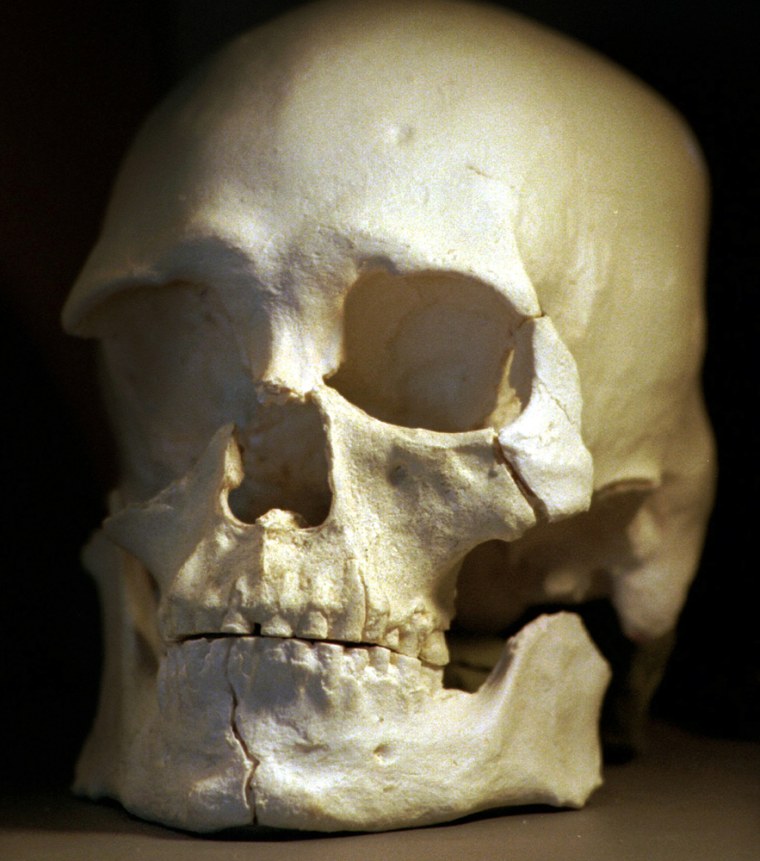After nearly a decade of court battles, scientists plan to begin studying the 9,300-year-old skeleton known as Kennewick Man next week.
A team of scientists plans to examine the bones at the University of Washington's Burke Museum in Seattle beginning July 6, according to their attorney, Alan Schneider.
Four Northwest Indian tribes had opposed the study, claiming the skeleton could be an ancestor who should be buried. The Interior Department and the Army Corps of Engineers had sided with the tribes.
But a federal judge in Portland, backed by the 9th U.S. Circuit Court of Appeals, ruled that the researchers could study the bones to determine how the man died and to find clues to prehistoric life in North America.
"What they're getting is absolutely essential baseline information that has never been obtained for this skeleton," Schneider said Tuesday.
The bones quickly attracted attention from scientists after they were found in 1996 on a Columbia River bank near Kennewick, Wash.
The skeleton is one of the oldest and most complete skeletons ever found on the continent. The long, narrow shape of the skull shows characteristics unlike modern American Indians, raising questions that researchers hope to answer with extensive study.
"Understanding human variation is really critical," said Cleone Hawkinson, Portland anthropologist who founded Friends of America's Past to support scientific access to the ancient remains. "We can't close off an entire chapter in history."
She noted the eight anthropologists who filed the original lawsuit seeking access had to pay for their legal costs and the research, or seek funding for it. No government money was involved.
"It's all coming out of the scientists' pockets," Hawkinson said.
The researchers plan to do what is called a "taphonomic" examination of the skeleton, taking measurements and making observations about the processes that affect animal and plant remains as they become fossilized. Further study is planned based on the initial findings, Schneider said.
"Taphonomy is really a forensic examination," Schneider said. "You try to determine everything that has affected the skeleton from day of death until you study it."
A coalition of four tribes _ the Umatilla, Yakama, Colville and Nez Perce _ claimed the bones were covered by the Native American Graves Protection and Repatriation Act and belonged to the tribes.
U.S. District Judge John Jelderks and the appeals court, however, ruled the tribes could prove no direct link to the bones and the act did not apply.
The tribes have appealed the most recent 9th Circuit ruling, but attorneys involved in the case and Jelderks' office said a decision still is pending. Calls to tribal officials were not immediately returned.
Legislation remains under consideration in Congress that would allow federally recognized tribes to claim ancient remains even if they cannot prove a link to a current tribe.
